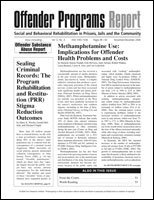Worth Reading
Author: Stacy Calhoun.
Source: Volume 18, Number 05, January/February 2015 , pp.71-73(3)

< previous article |next article > |return to table of contents
Abstract:
Is an ASPD diagnosis a clear indication of the dangerousness of a person? The authors “do the math” by assessing whether an ASPD diagnosis is a significant predictor of prison misconduct in “DSM-5 Antisocial Personality Disorder: Predictive Validity in a Prison Sample” by John Edens, Shannon Kelley, Scott Lilienfeld, Jennifer Skeem, and Kevin Douglas in Law and Human Behavior (September 2014) 1–7; The extent to which treatment reduces misconduct among female inmates with a co-occuring disorder of mental health issues and substance abuse as well as those who have a single disorder is examined in “The Effects of Treatment Exposure on Prison Misconduct for Female Prisoners With Substance Use, Mental Health, and Co-Occurring Disorders” by Kimberly Houser, Brandy Blasko, and Steven Belenko in 27(1) Criminal Justice Studies (2014) 43–62.Keywords: antisocial behavior; impulsivity, irritability, and remorselessness; future prison misconduct; indication of the dangerousness; impact of treatment on prison misconduct; time in treatment; Level of Service Inventory–Revised (LSI-R)
Affiliations:
1: UCLA Integrated Substance Abuse Programs.